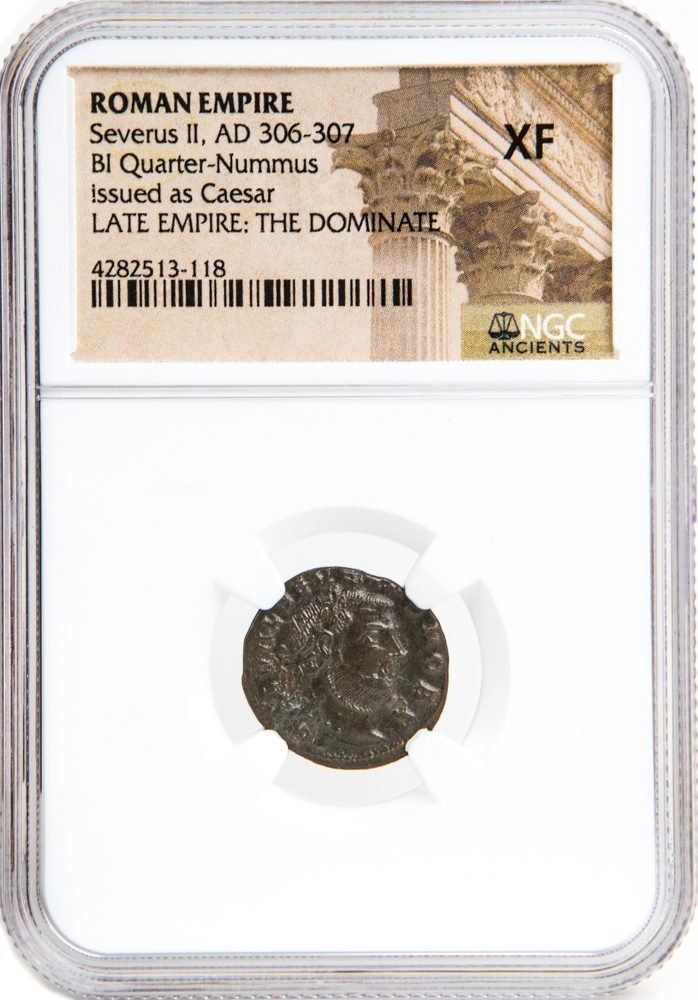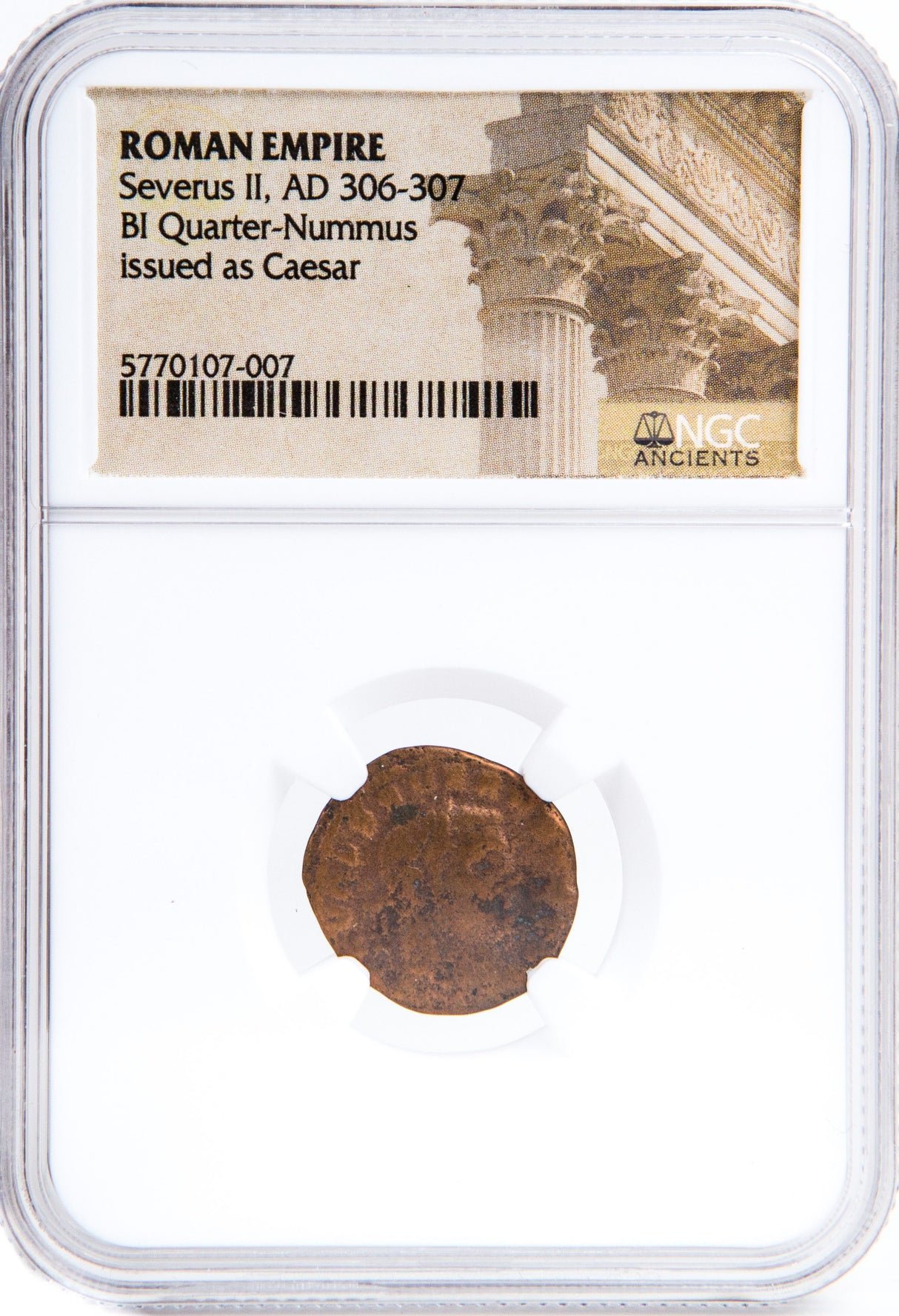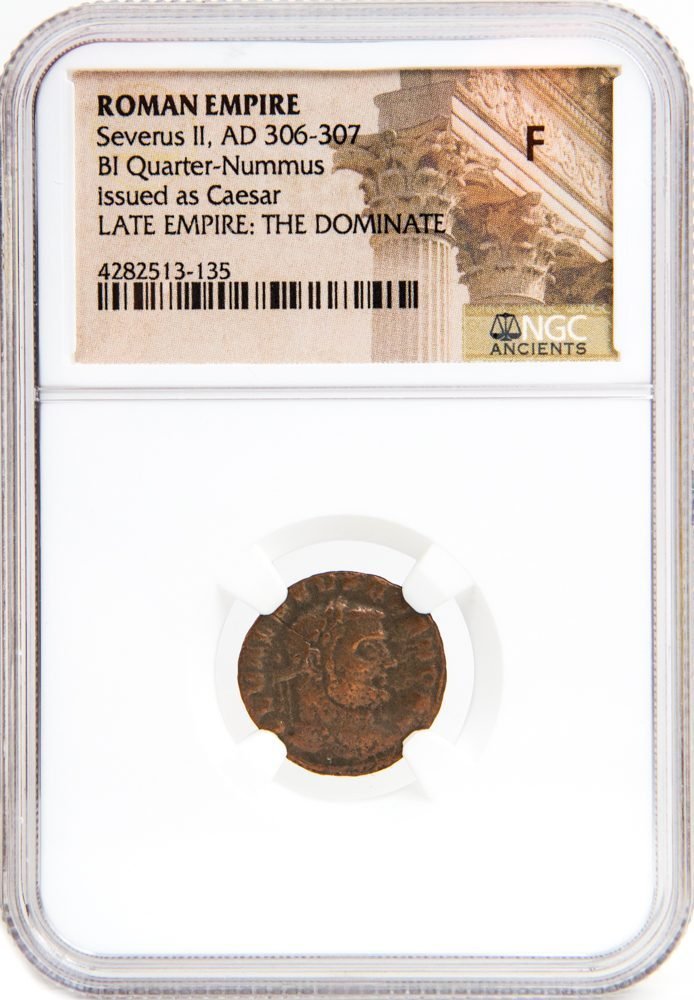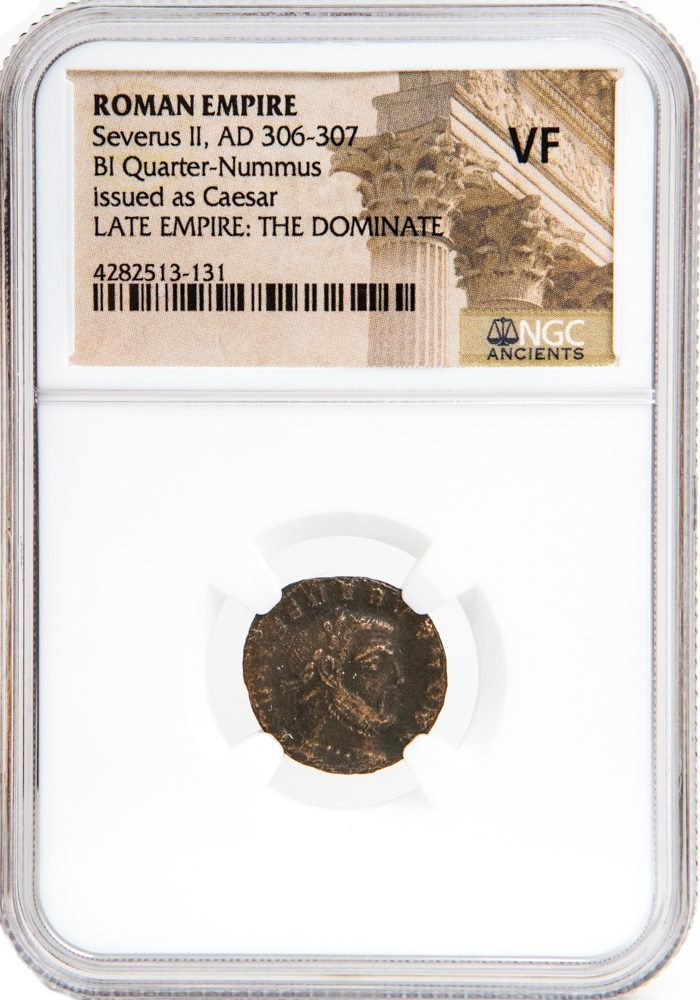 Image 1 of 5
Image 1 of 5

 Image 2 of 5
Image 2 of 5

 Image 3 of 5
Image 3 of 5

 Image 4 of 5
Image 4 of 5

 Image 5 of 5
Image 5 of 5






Roman Coin of Maximinus II (about 1710 years ago)
A rare bronze quarter nummus from the tumultuous final years of the Tetrarchy system, showcasing one of Rome's last pagan emperors who actively persecuted Christians.
Front side (obverse): Portrait of Emperor Maximinus II wearing imperial regalia
Back side (reverse): Roman imperial symbols and inscriptions
Technical specifications: Bronze quarter nummus coin, NGC certified
Historical significance: Maximinus II was a nephew of Emperor Galerius who rose from Caesar (junior emperor) in 305 CE to Augustus (senior emperor) in 311 CE. He was one of the last rulers to systematically persecute Christians and ultimately died by suicide after being defeated by his rival Licinius I during the civil wars of the Tetrarchy - Diocletian's failed system for peaceful power transition between emperors.
A rare bronze quarter nummus from the tumultuous final years of the Tetrarchy system, showcasing one of Rome's last pagan emperors who actively persecuted Christians.
Front side (obverse): Portrait of Emperor Maximinus II wearing imperial regalia
Back side (reverse): Roman imperial symbols and inscriptions
Technical specifications: Bronze quarter nummus coin, NGC certified
Historical significance: Maximinus II was a nephew of Emperor Galerius who rose from Caesar (junior emperor) in 305 CE to Augustus (senior emperor) in 311 CE. He was one of the last rulers to systematically persecute Christians and ultimately died by suicide after being defeated by his rival Licinius I during the civil wars of the Tetrarchy - Diocletian's failed system for peaceful power transition between emperors.
A rare bronze quarter nummus from the tumultuous final years of the Tetrarchy system, showcasing one of Rome's last pagan emperors who actively persecuted Christians.
Front side (obverse): Portrait of Emperor Maximinus II wearing imperial regalia
Back side (reverse): Roman imperial symbols and inscriptions
Technical specifications: Bronze quarter nummus coin, NGC certified
Historical significance: Maximinus II was a nephew of Emperor Galerius who rose from Caesar (junior emperor) in 305 CE to Augustus (senior emperor) in 311 CE. He was one of the last rulers to systematically persecute Christians and ultimately died by suicide after being defeated by his rival Licinius I during the civil wars of the Tetrarchy - Diocletian's failed system for peaceful power transition between emperors.
Galerius Valerius Maximinus Daza, born as Daza[i] (Ancient Greek: Μαξιμίνος; 20 November c. 270 – c. July 313), was Roman emperor from 310 to 313. He became embroiled in the civil wars of the Tetrarchy between rival claimants for control of the empire, in which he was defeated by Licinius. A committed pagan, he engaged in one of the last persecutions of Christians, before issuing an edict of tolerance granting Christians their freedoms back near his death. Maximinus Daza is the last to be referred as Pharaoh of Egypt.
The emperor Maximinus was originally called "Daza", an ancient name with various unknown high distinction meanings in Illyria, where he was born.[4][7] The form "Daia" given by the Christian writer Lactantius, an important source on the emperor's life, is considered a misspelling.[8][4] He acquired the name "Maximinus" at the request of his maternal uncle, Galerius (a Roman emperor of Dacian and Thracian origin),[9][ii] and his full name as emperor was "Galerius Valerius Maximinus Daza".[11] Modern scholarship often refers to him as "Maximinus Daza", though this particular form is not attested by epigraphic or literary evidence.[8][12]


























